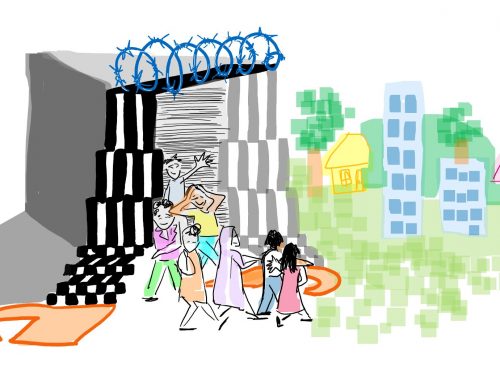Digging beneath the detention statistics, 2019: what has changed?
This blog was written by one of our member organisations, AVID, which supports volunteer visitors to people held in immigration detention, and appeared originally on their website.
Official statistics released today show that yet again, the number of people in detention is continuing to fall. In the 12 months up to June 2019, 24,052 people entered detention, down 8% on the year before. Compare this to 2015, one of the record ‘highs’ in use of detention, where 32,447 people were held. That’s a welcome reduction of around 25% in four years.
Taking the evening of 30th June as a snapshot, in 2015 there were 3,418 people held in detention, compared to 1,727 on the same night in 2019. So far, so good.
Lengths of detention have also continued to fall. Back in 2015, people were held for longer periods far more frequently, with recorded data in some cases of over five years. Looking again at the June 2019 figures, 71% of those leaving detention were held for less than 28 days. However, of those held more than 28 days, 144 were held over six months, and 45 for over a year. So while the extremes of 2015 might be a thing of the past, lengthy periods of detention are, sadly, still very much part of the system. A year is far too long to be held for administrative convenience.
So what happens to people once they’ve been detained? These latest figures suggest that far from detention fulfilling its purpose – to remove people from the UK – the likelihood of someone actually leaving the country from detention is falling. From a high of 64% in March 2011, numbers removed fell to 48% in June 2015 and for April to May 2019 is at 38%. This means that of everyone detained, around 62% will eventually be released, their detention having served no purpose. So many thousands of people incarcerated, facing the anxiety, trauma and isolation of indefinite detention. Not to mention the cost to the public purse.
And the longer someone is held, the less likely their removal becomes. Of those held 28 days or less in the last year, 41% were removed from the UK. This fell to 31% for those held over 28 days. These figures have remained much the same for so many years now. The case for a time limit is clear.
So, fewer people are being detained, and the lengths of detention also appear to be falling, albeit not as much as we would like.
It is perhaps not surprising that the impact of these changes is not experienced equally. There is no corresponding reduction in the numbers being held in prisons, which have remained pretty consistently at around 300 – 400 people every month. This group is therefore becoming a far greater proportion of the total. From 10% in 2017, by the end of 2018 people held in prison amounted to 21% of all those detained. For the Home Office to continue to exclude this group from the very basic safeguards that exist in other places of detention is becoming more and more obvious, and more and more problematic. For example, access to the basic provisions of the Detention Duty Advice Scheme, or to communications like a mobile phone or internet access. Legal and policy provisions such as Rule 35 or the (much-maligned) Adults at Risk policy similarly don’t apply in prisons. Support provision through visitors groups or other NGOs is also much less available in prison. The disparities in provision between prison and detention are becoming much more apparent in a context of policy change and promised reform. For how much longer can the Home Office ignore this?
As always, today’s official statistics only tell us part of the story. For now though, it seems that those of us working for detention reform can celebrate a small victory as the scale of detention in the UK continues to fall. We must hope, however, that the promised reforms will reach further than they have so far, and will not leave anyone behind.
All figures are from Immigration Statistics to year end June 2019, published 22nd August and available here: https://www.gov.uk/government/publications/immigration-statistics-year-ending-june-2019/how-many-people-are-detained-or-returned





